Opinion & Analysis
Finding the right wedge shaft for your game
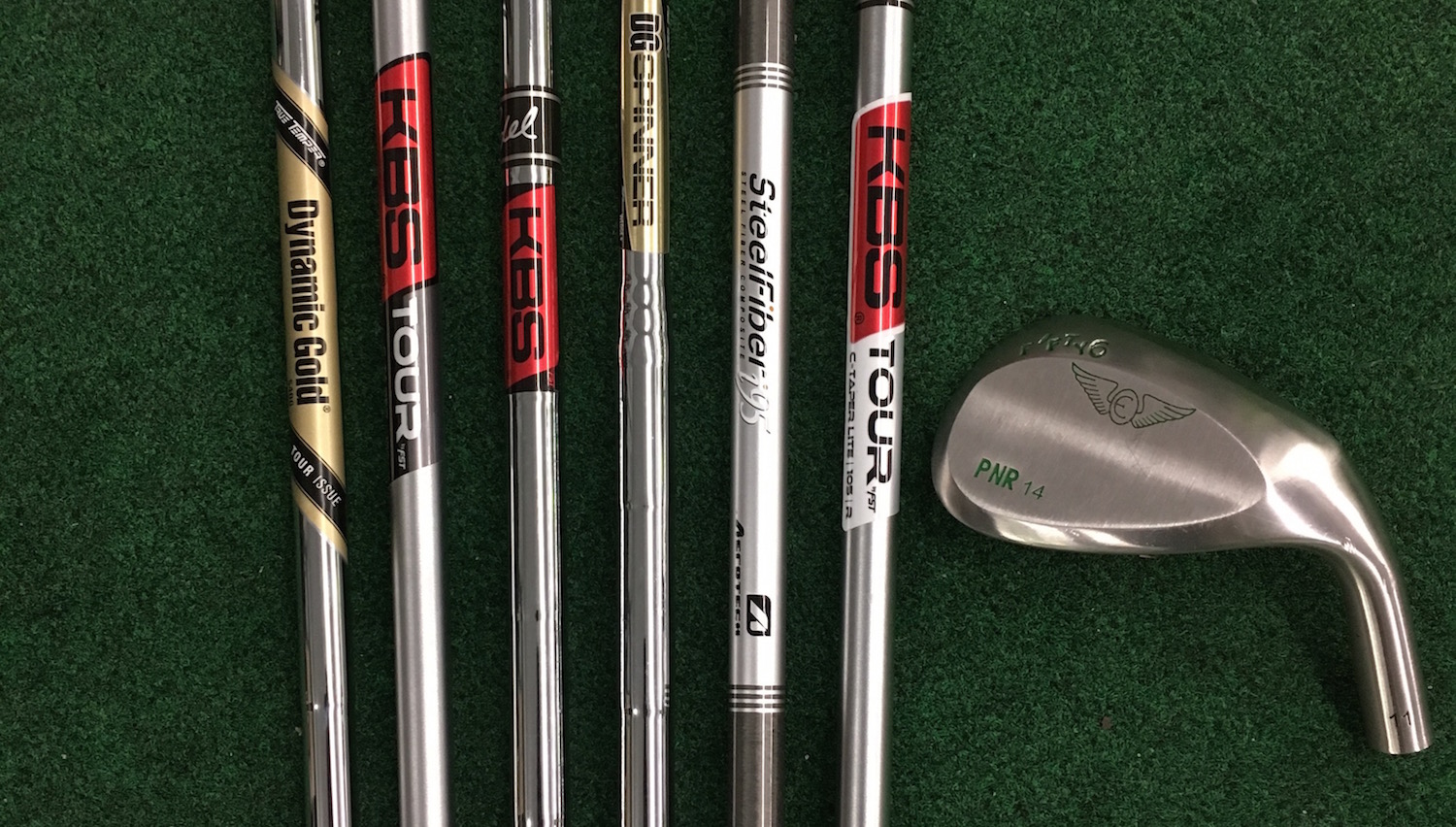
In the minds of many golfers, wedges are the most important clubs in the bag. As a fitter, I am always surprised how this belief conflicts with the amount of consideration golfers typically put into selecting their wedges. When asked why certain wedges are in their bag, most reply with something along the lines of, “Well, I’ve always just used this loft and grind,” “I’m not really sure” or “My buddy, who’s a scratch golfer, told me I need it.” For most, wedges are in an unfortunate race with the putter to win the unceremonious award of the clubs that help golfers the least.
Most people know there are wedges with multiple loft and bounce options available, even if they’re not quite sure what’s best for them. Very few, however, have ever thought about the shafts in their wedges. In this article, I’ll be showing you the importance of finding the proper shaft for the wedges in your bag by illustrating how different shafts can impact performance.
The goal of this test is not to make some generic recommendation that “you should be playing XXX shaft,” but rather to highlight the variance that can exist across different shafts. I encourage you to do your own testing with a qualified fitter, but if one is unavailable in your area, these themes might help find a good wedge shaft for you.
Testing Process
To conduct these tests, I selected three testers with low single-digit handicaps and relatively consistent swings. Any findings will only be amplified for higher-handicap golfers due to increased swing variability, and any shaft-to-shaft variations might have been hidden by this inconsistency.
We used an Edel Wedge fitting system because of the interchangeable hosel system and extensive shaft options. Each tester selected a 56-degree head with the bounce that fit them best. They then used the same wedge head on each of the six shafts we tested. The order the shafts was randomized for each golfer during the testing process.
The shafts represented some common wedge shafts and crossed multiple weights, flexes and EI profiles. Testers hit five shots at a target 100 yards away with each shaft, and all shots were measured with FlightScope.
The Data
Data: To start, I’m posting a table that shows summary results for each shaft per golfer (below). A couple of things to remember when reading this:
- All distances are in yards.
- All distances are carry distances.
- On lateral distances: negative numbers represent left of target, positive numbers right of target.
- Standard deviation shows the variance in the range with smaller numbers being better.
Full Testing Results
A lot to digest, right?
To help gauge shaft performance for each golfer, I created an additional table showing the ranges in carry distance and lateral dispersion. These numbers were then multiplied to calculate the total area covered by the five shots with each shaft. This is the single best summary stat I can think of to grade wedge performance.
Simplified Testing Results
Now we can start to see some things.
- Based on the average size of the dispersion area, Wes is the best wedge player. Sorry Mike and Nick, but I’m pretty sure you already knew this…
- Distance control is where variation really shows up, and this is where the best wedge players differentiate themselves. Of the 18 player/shaft combinations we tested, there were only two where the carry distance range was less than the lateral range.
- Each player did have a specific shaft that stood out, one with a dispersion area much smaller than the other options. There just wasn’t any consistency in shaft performance across the golfers.
Best and Worst Shafts for Each Tester
Launch Angle and Spin Rate Rankings
The same variation is found when looking at launch angle and spin rates, with the shafts that produced the highest and lowest launch and spin numbers varying for each golfer. These tables are simple stack rankings, based on performance.
- One interesting correlation was that for two of the three golfers, the same shaft provided the smallest dispersion area and lowest launch angle. While not a hard and fast rule, it’s something to keep in mind when trying out wedge shafts.
- The shafts that worked better for the testers weren’t necessarily the ones you would have guessed. The KBS C-Taper Lite 105R worked the best for Nick, who has an upright and aggressive swing. Wes has a flat, smooth swing and the relatively stiff and heavy True Temper DG Spinner Wedge+ shaft worked the best for him.
Two Big Takeaways
- Lighter and More Flexible is Probably Better. When selecting new or re-shafting your existing wedges, your best bet is to find a fitter with the proper experience and equipment to guide you through the options. If that’s not possible, a general trend shown here is that a shaft that’s lighter and a bit more flexible than what you’re using in your irons is a good bet.
- Enough about the Spin. Worrying about what wedge shaft creates the most spin should not be your top concern. Even though there was shaft-to-shaft variation in the spin produced, they all had enough to quickly stop the ball on the green. As good as these Edel wedges are, this is a consistent finding regardless of the brand we’re fitting. Finding the proper wedge head (loft, grind, bounce) and a shaft that helps your distance control should be your main focus when getting new wedges, not if one option gives you an extra hundred or two RPMs.
In our next article, we’ll talk more about selecting bounce and give you some tips on how to fit yourself if you can’t find a fitter with a proper wedge fitting system.
- LIKE427
- LEGIT58
- WOW25
- LOL5
- IDHT6
- FLOP12
- OB3
- SHANK35
19th Hole
Vincenzi’s 2024 PGA Championship betting preview: Rising star ready to join the immortals at Valhalla

The second major of the 2024 season is upon us as the world’s best players will tee it up this week at Valhalla Golf Club in Louisville, Kentucky to compete for the Wanamaker Trophy.
The last time we saw Valhalla host a major championship, Rory McIlroy fended off Phil Mickelson, Henrik Stenson, Rickie Fowler and the creeping darkness that was descending upon the golf course. The Northern Irishman had the golf world in the palm of his hand, joining only Tiger Woods and Jack Nicklaus as players who’d won four major championships by the time they were 25 years old.
Valhalla is named after the great hall described in Norse mythology where the souls of Vikings feasted and celebrated with the Gods. The course is a Jack Nicklaus-design that has ranked among Golf Digest’s “America’s 100 Greatest Courses” for three decades.
Valhalla Golf Club is a par-71 measuring 7,542 yards with Zoysia fairways and Bentgrass greens. The course has rolling hills and dangerous streams scattered throughout and the signature 13th hole is picturesque with limestone and unique bunkering protecting the green. The 2024 PGA Championship will mark the fourth time Valhalla has hosted the event.
The field this week will consist of 156 players, including 16 PGA Champions and 33 Major Champions.
Past Winners of the PGA Championship
- 2023: Brooks Koepka (-9) Oak Hill
- 2022: Justin Thomas (-5) Southern Hills
- 2021: Phil Mickelson (-6) Kiawah Island
- 2020: Collin Morikawa (-13) TPC Harding Park
- 2019: Brooks Koepka (-8) Bethpage Black
- 2018: Brooks Koepka (-16) Bellerive
- 2017: Justin Thomas (-8) Quail Hollow
- 2016: Jimmy Walker (-14) Baltusrol
- 2015: Jason Day (-20) Whistling Straits
- 2014: Rory McIlroy (-16) Valhalla
In this article and going forward, I’ll be using the Rabbit Hole by Betsperts Golf data engine to develop my custom model. If you want to build your own model or check out all of the detailed stats, you can sign up using promo code: MATTVIN for 25% off any subscription package (yearly is best value).
Key Stats For Valhalla
Let’s take a look at five key metrics for Oak Hill to determine which golfers boast top marks in each category over their past 24 rounds.
1. Strokes Gained: Approach
Valhalla will play as a true all-around test of golf for the world’s best. Of course, it will take strong approach play to win a major championship.
Strokes Gained: Approach Over Past 24 Rounds
- Shane Lowry (+1.25)
- Scottie Scheffler (+1.09)
- Jordan Smith (+1.05)
- Tom Hoge (+.96)
- Corey Conners (+.94)
2. Strokes Gained: Off the Tee
Valhalla will play long and the rough will be penal. Players who are incredibly short off the tee and/or have a hard time hitting fairways will be all but eliminated from contention this week at the PGA Championship.
Strokes Gained: Off the Tee Over Past 24 Rounds:
- Bryson DeChambeau (+1.47)
- Scottie Scheffler (+1.11)
- Keith Mitchell (+.90)
- Alejandro Tosti (+.89)
- Ludvig Aberg (+.82)
Strokes Gained: Total on Nickalus Designs
Valhalla is a classic Nicklaus Design. Players who play well at Nicklaus designs should have an advantage coming into this major championship.
Strokes Gained: Total on Nicklaus Designs over past 36 rounds:
- Jon Rahm (+2.56)
- Scottie Scheffler (+2.48)
- Patrick Cantlay (+2.35)
- Collin Morikawa (+1.79)
- Shane Lowry (+1.57)
Strokes Gained: Tee to Green on Very Long Courses
Valhalla is going to play extremely long this week. Players who have had success playing very long golf courses should be better equipped to handle the conditions of this major championship.
Strokes Gained: Total on Very Long Courses Over Past 24 Rounds:
- Scottie Scheffler (+2.44)
- Rory McIlroy (+2.24)
- Will Zalatoris (+1.78)
- Viktor Hovland (+1.69)
- Xander Schauffele (+1.60)
Strokes Gained: Total in Major Championships
One factor that tends to play a large role in deciding major championships is which players have played well in previous majors leading up to the event.
Strokes Gained: Total in Major Championships over past 20 rounds:
- Scottie Scheffler (+3.14)
- Will Zalatoris (+2.64)
- Rory McIlroy (+2.49)
- Xander Schauffele (+2.48)
- Tommy Fleetwood (2.09)
Strokes Gained: Putting on Bentgrass Greens
Valhalla features pure Bentgrass putting surfaces. Players who are comfortable putting on this surface will have an advantage on the greens.
Strokes Gained: Putting on Bentgrass Greens over Past 24 Rounds:
- Ludvig Aberg (+1.12)
- Denny McCarthy (+1.08)
- Matt Fitzpatrick (+0.99)
- Justin Rose (+0.93)
- J.T. Poston (0.87)
Strokes Gained: Total on Zoysia Fairways
Valhalla features Zoysia fairways. Players who are comfortable playing on this surface will have an advantage on the field.
Strokes Gained: Total on Zoysia Fairways over past 36 rounds:
- Justin Thomas (+1.53)
- Will Zalatoris (+1.47)
- Xander Schauffele (+1.40)
- Brooks Koepka (+1.35)
- Rory McIlroy (+1.23)
2024 PGA Championship Model Rankings
Below, I’ve compiled overall model rankings using a combination of the key statistical categories previously discussed — SG: Approach (25%), SG: Off the Tee (22%), SG: T2G on Very Long Courses (12%), SG: Putting on Bentgrass (+12%), SG: Total on Nicklaus Designs (12%). SG: Total on Zoysia Fairways (8%), and SG: Total in Major Championships (8%).
- Brooks Koepka
- Xander Schauffele
- Rory McIlroy
- Scottie Scheffler
- Bryson DeChambeau
- Shane Lowry
- Alex Noren
- Will Zalatoris
- Cameron Young
- Keith Mitchell
- Hideki Matsuyama
- Billy Horschel
- Patrick Cantlay
- Viktor Hovland
- Adam Schenk
- Chris Kirk
- Sahith Theegala
- Min Woo Lee
- Joaquin Niemann
- Justin Thomas
2024 PGA Championship Picks
Ludvig Aberg +1800 (BetMGM)
At The Masters, Ludvig Aberg announced to the golf world that he’s no longer an “up and coming” player. He’s one of the best players in the game of golf, regardless of experience.
Augusta National gave Aberg some necessary scar tissue and showed him what being in contention at a major championship felt like down the stretch. Unsurprisingly, he made a costly mistake, hitting it in the water left of the 11th hole, but showed his resilience by immediately bouncing back. He went on to birdie two of his next three holes and finished in solo second by three shots. With the type of demeanor that remains cool in pressure situations, I believe Ludvig has the right mental game to win a major at this point in his career.
Aberg has not finished outside of the top-25 in his past eight starts, which includes two runner-up finishes at both a “Signature Event” and a major championship. The 24-year-old is absolutely dominant with his driver, which will give him a major advantage this week. In the field he ranks, in Strokes Gained: Off the Tee, and has gained strokes in the category in each of his past ten starts. Aberg is already one of the best drivers of the golf ball on the planet.
In Norse mythology, Valhalla is the great hall where the souls of Vikings feasted and celebrated with the Gods. The Swedes, who are of Old Norse origin, were the last of the three Scandinavian Kingdoms to abandon the Old Norse Gods. A Swede played a major role in the 2014 PGA Championship at Valhalla, and I believe another, Ludvig Aberg, will be the one to conquer Valhalla in 2024.
Bryson DeChambeau +2800 (BetMGM)
Bryson DeChambeau is one of the few players in the world that I believe has the game to go blow-for-blow with Scottie Scheffler. Although he isn’t as consistent as Scheffler, when he’s at his best, Bryson has the talent to beat him.
At The Masters, DeChambeau put forth a valiant effort at a golf course that simply does not suit his game. Valhalla, on the other hand, is a course that should be perfect for the 30-year-old. His ability to overpower a golf course with his driver will be a serious weapon this week.
Bryson has had some success at Jack Nicklaus designs throughout his career as he won the Memorial at Muirfield Village back in 2018. He’s also had incredible results on Bentgrass greens for the entirety of his professional career. Of his 10 wins, nine of them have come on Bentgrass greens, with the only exception being the Arnold Palmer Invitational at Bay Hill. He also has second place finishes at Medinah and TPC Summerlin, which feature Bentgrass greens.
Love him or hate him, it’s impossible to argue that Bryson isn’t one of the most exciting and important players in the game of golf. He’s also one of the best players in the world. A second major is coming soon for DeChambeau, and I believe he should be amongst the favorites to hoist the Wanamaker Trophy this week.
Patrick Cantlay +4000 (FanDuel)
There’s no way of getting around it: Patrick Cantlay has been dissapointing in major championships throughout his professional career. He’s been one of the top players on Tour for a handful of years and has yet to truly contend at a major championship, with the arguable exception of the 2019 Masters.
Despite not winning majors, Cantlay has won some big events. The 32-year-old has won two BMW Championships, two Memorial Tournaments as well as a Tour Championship. His victories at Memorial indicate how much Cantlay loves Nicklaus designs, where he ranks 3rd in the field in Strokes Gained: Total over his past 36 rounds behind only Scottie Scheffler and Jon Rahm.
Cantlay also loves Bentgrass greens. Six of Cantlay’s seven individual wins on the PGA Tour have come on Bentgrass greens and he also was one of the best putters at the 2023 Ryder cup at Marco Simone (also Bentgrass). At Caves Valley (2021 BMW Championship), he gained over 12 strokes putting to outduel another Bentgrass specialist, Bryson DeChambeau.
Cantlay finished 22nd in The Masters, which was a solid result considering how many elite players struggled that week. He also has two top-ten finishes in his past five PGA Championships. He’s undeniably one of the best players in the field, therefore, it comes down to believing Cantlay has the mental fortitude to win a major, which I do.
Joaquin Niemann +4000 (BetMGM)
I believe Joaquin Niemann is one of the best players in the world. He has three worldwide wins since December and has continued to improve over the course of his impressive career thus far. Still only 25, the Chilean has all the tools to be a serious contender in major championships for years to come.
Niemann has been the best player on LIV this season. Plenty will argue with the format or source of the money on LIV, but no one can argue that beating players such as Jon Rahm, Bryson DeChambeau, Dustin Johnson, Brooks Koepka and Cameron Smith is an unremarkable achievement. Niemann is an elite driver of the golf ball who hits it farther than just about anyone in the field not named Bryson DeChambeau or (arguably) Rory McIlroy.
Niemann is another player who has been fantastic throughout his career on Bentgrass greens. Prior to leaving the PGA Tour, Bentgrass was the only green surface in which Joaco was a positive putter. It’s clearly a surface that he is very comfortable putting on and should fare around and on the greens this week.
Niemann is a perfect fit for Valhalla. His low and penetrating ball flight will get him plenty of runout this week on the fairways and he should have shorter shots into the green complexes than his competitors. To this point in his career, the former top ranked amateur in the world (2018) has been underwhelming in major championships, but I don’t believe that will last much longer. Joaquin Niemann is a major championship caliber player and has a real chance to contend this week at Valhalla.
- LIKE24
- LEGIT6
- WOW1
- LOL0
- IDHT0
- FLOP2
- OB0
- SHANK6
Opinion & Analysis
The Wedge Guy: What really makes a wedge work? Part 2

In my last post, I explained the basic performance dynamics of “smash factor” and “gear effect” as they apply to your wedges and your wedge play success. If you missed that post, you can read it here.
At the end of that post, I promised “part 2” of this discussion of what makes a wedge work the way it does. So, let’s dive into the other two components of any wedge – the shaft and the grip.
It’s long been said that the shaft is “the engine of the golf club.” The shaft (and grip) are your only connection to all the technologies that are packed into the head of any golf club, whether it be a driver, fairway, hybrid, iron, wedge or even putter.
And you cannot ignore those two components of your wedges if your goal is optimizing your performance.
I’ve long been an advocate of what I call a “seamless transition” from your irons into your wedges, so that the feel and performance do not disconnect when you choose a gap wedge, for example, instead of your iron-set-matching “P-club.” In today’s golf equipment marketplace, more and more golfers are making the investment of time and money to experience an iron fitting, going through trial and error and launch monitor measuring to get just the right shaft in their irons.
But then so many of those same golfers just go into a store and choose wedges off the retail display, with no similar science involved at all. And that’s why I see so many golfers with a huge disconnect between their custom-fitted irons, often with lighter and/or softer graphite or light steel shafts . . . and their off-the-rack wedges with the stock stiff steel ‘wedge flex’ shaft common to those stock offerings.
If your wedge shafts are significantly heavier and stiffer than the shafts in your irons, it is physically impossible for you to make the same swing. Period.
To quickly improve your wedge play, one of the first things you can do is have your wedges re-shafted with the same or similar shaft that is in your irons.
There’s another side of that shaft weight equation; if you don’t have the forearm and hand strength of a PGA Tour professional, you simply cannot “handle” the same weight shaft that those guys play to master the myriad of ‘touch shots’ around the greens.
Now, let’s move on to the third and other key component of your wedges – the grips. If those are not similar in shape and feel to the grips on your irons, you have another disconnect. Have your grips checked by a qualified golf club professionals to make sure you are in sync there.
The one caveat to that advice is that I am a proponent of a reduced taper in your wedge grips – putting two to four more layers of tape under the lower hand, or selecting one of the many reduced taper grips on the market. That accomplishes two goals for your scoring.
First, it helps reduce overactive hands in your full and near-full wedge swings. Quiet hands are key to good wedge shots.
And secondly, it provides a more consistent feel of the wedge in your hands as you grip down for those shorter and more delicate shots around the greens. And you should always grip down as you get into those touch shots. I call it “getting closer to your work.”
So, if you will spend as much time selecting the shafts and grips for your wedges as you do choosing the brand, model, and loft of them, your scoring range performance will get better.
More from the Wedge Guy
- The Wedge Guy: What really makes a wedge work? Part 1
- The Wedge Guy: The easiest-to-learn golf basic
- The Wedge Guy: Golf mastery begins with your wedge game
- LIKE6
- LEGIT3
- WOW0
- LOL1
- IDHT1
- FLOP0
- OB0
- SHANK5
19th Hole
Vincenzi’s 2024 Wells Fargo Championship betting preview: Tommy Fleetwood ready to finally land maiden PGA Tour title

The PGA Tour season ramps back up this week for another “signature event,” as golf fans look forward to the year’s second major championship next week.
After two weaker-field events in the Zurich Classic and the CJ Cup Byron Nelson, most of the best players in the world will head to historic Quail Hollow for one of the best non-major tournaments of the year.
Last season, Wyndham Clark won the event by four shots.
Quail Hollow is a par-71 measuring 7,521 yards that features Bermudagrass greens. The tree-lined, parkland style course can play quite difficult and features one of the most difficult three-hole stretches in golf known as “The Green Mile,” which makes up holes 16-18: two mammoth par 4s and a 221-yard par 3. All three holes have an average score over par, and water is in play in each of the last five holes on the course.
The field is excellent this week with 68 golfers teeing it up without a cut. All of the golfers who’ve qualified are set to tee it up, with the exception of Scottie Scheffler, who is expecting the birth of his first child.
Past Winners at Quail Hollow
- 2023: Wyndham Clark (-19)
- 2022: Max Homa (-8)
- 2021: Rory McIlroy (-10)
- 2019: Max Homa (-15)
- 2018: Jason Day (-12)
- 2017: Justin Thomas (-8) (PGA Championship)
- 2016: James Hahn (-9)
- 2015: Rory McIlroy (-21)
Key Stats For Quail Hollow
Strokes Gained: Approach
Strokes gained: Approach will be extremely important this week as second shots at Quail Hollow can be very difficult.
Total SG: Approach Over Past 24 Rounds
- Akshay Bhatia (+1.16)
- Tom Hoge (+1.12)
- Corey Conners (+1.01)
- Shane Lowry (+0.93)
- Austin Eckroat (+0.82)
Strokes Gained: Off the Tee
Quail Hollow is a long course on which it is important to play from the fairway. Both distance and accuracy are important, as shorter tee shots will result in approach shots from 200 or more yards. With most of the holes heavily tree lined, errant drives will create some real trouble for the players.
Strokes Gained: Off the Tee Past 24 Rounds:
- Ludvig Aberg (+0.73)
- Rory McIlroy (+0.69)
- Xander Schauffele (+0.62)
- Viktor Hovland (+0.58)
- Chris Kirk (+0.52)
Proximity: 175-200
The 175-200 range is key at Quail Hollow. Players who can hit their long irons well will rise to the top of the leaderboard.
Proximity: 175-200+ over past 24 rounds:
- Cameron Young (28’2″)
- Akshay Bhatia (29’6″)
- Ludvig Aberg (+30’6″)
- Sam Burns (+30’6″)
- Collin Morikawa (+30’9″)
SG: Total on Tom Fazio Designs
Players who thrive on Tom Fazio designs get a bump for me at Quail Hollow this week.
SG: Total on Tom Fazio Designs over past 36 rounds:
- Patrick Cantlay (+2.10)
- Rory McIlroy (+1.95)
- Tommy Fleetwood (+1.68)
- Austin Eckroat (+1.60)
- Will Zalatoris (+1.57)
Strokes Gained: Putting (Bermudagrass)
Strokes Gained: Putting has historically graded out as the most important statistic at Quail Hollow. While it isn’t always predictable, I do want to have it in the model to bump up golfers who prefer to putt on Bermudagrass.
Strokes Gained: Putting (Bermudagrass) Over Past 24 Rounds:
- Taylor Moore (+0.82)
- Nick Dunlap (+.76)
- Wyndham Clark (+.69)
- Emiliano Grillo (+.64)
- Cam Davis (+.61)
Course History
This stat will incorporate players that have played well in the past at Quail Hollow.
Course History over past 36 rounds (per round):
- Rory McIlroy (+2.50)
- Justin Thomas (+1.96)
- Jason Day (+1.92)
- Rickie Fowler (+1.83)
- Viktor Hovland (+1.78)
Wells Fargo Championship Model Rankings
Below, I’ve compiled overall model rankings using a combination of the five key statistical categories previously discussed — SG: Approach (27%), SG: Off the Tee (23%), SG: Total on Fazio designs (12%), Proximity: 175-200 (12%), SG: Putting Bermuda grass (12%), and Course History (14%).
- Wyndham Clark
- Rory McIlroy
- Xander Schauffele
- Shane Lowry
- Hideki Matsuyama
- Viktor Hovland
- Cameron Young
- Austin Eckroat
- Byeong Hun An
- Justin Thomas
2024 Wells Fargo Championship Picks
Tommy Fleetwood +2500 (DraftKings)
I know many out there have Tommy fatigue when it comes to betting, which is completely understandable given his lack of ability to win on the PGA Tour thus far in his career. However, history has shown us that players with Fleetwood’s talent eventually break though, and I believe for Tommy, it’s just a matter of time.
Fleetwood has been excellent on Tom Fazio designs. Over his past 36 rounds, he ranks 3rd in the field in Strokes Gained: Total on Fazio tracks. He’s also been incredibly reliable off the tee this season. He’s gained strokes in the category in eight of his past nine starts, including at The Masters, the PLAYERS and the three “signature events” of the season. Tommy is a golfer built for tougher courses and can grind it out in difficult conditions.
Last year, Fleetwood was the first-round leader at this event, firing a Thursday 65. He finished the event in a tie for 5th place.
For those worried about Fleetwood’s disappointing start his last time out at Harbour Town, he’s bounced back nicely after plenty of poor outings this season. His T7 at the Valero Texas Open was after a MC and T35 in his prior two starts and his win at the Dubai Invitational came after a T47 at the Sentry.
I expect Tommy to bounce back this week and contend at Quail Hollow.
Justin Thomas +3000 (DraftKings)
It’s been a rough couple of years for Justin Thomas, but I don’t believe things are quite as bad as they seem for JT. He got caught in the bad side of the draw at Augusta for last month’s Masters and has gained strokes on approach in seven of his nine starts in 2024.
Thomas may have found something in his most recent start at the RBC Heritage. He finished T5 at a course that he isn’t the best fit for on paper. He also finally got the putter working and ranked 15th in Strokes Gained: Putting for the week.
The two-time PGA champion captured the first of his two major championships at Quail Hollow back in 2017, and some good vibes from the course may be enough to get JT out of his slump.
Thomas hasn’t won an event in just about two years. However, I still believe that will change soon as he’s been one of the most prolific winners throughout his PGA Tour career. Since 2015, he has 15 PGA Tour wins.
Course history is pretty sticky at Quail Hollow, with players who like the course playing well there on a regular basis. In addition to JT’s PGA Championship win in 2017, he went 4-1 at the 2022 Presidents Cup and finished T14 at the event last year despite being in poor form. Thomas can return as one of the top players on the PGA Tour with a win at a “signature event” this week.
Cameron Young +3500 (DraftKings)
For many golf bettors, it’s been frustrating backing Cam Young this season. His talent is undeniable, and one of the best and most consistent performers on the PGA Tour. He just hasn’t broken through with a victory yet. Quail Hollow has been a great place for elite players to get their first victory. Rory McIlroy, Anthony Kim, Rickie Fowler and Wyndham Clark all notched their first PGA Tour win at Quail.
Throughout Cam Young’s career, he has thrived at tougher courses with strong fields. This season, he finished T16 at Riviera and T9 at Augusta National, demonstrating his preference of a tough test. His ability to hit the ball long and straight off the tee make him an ideal fit for Quail Hollow, despite playing pretty poorly his first time out in 2023 (T59). Young should be comfortable playing in the region as he played his college golf at Wake Forest, which is about an hour’s drive from Quail Hollow.
The 26-year-old has played well at Tom Fazio designs in the past and ranks 8th in the field in Strokes Gained: Total on those courses in his last 36 rounds. Perhaps most importantly, this season, Young is the best player on the PGA Tour in terms of proximity from 175-200 in the fairway, which is where a plurality and many crucial shots will come from this week.
Young is an elite talent and Quail Hollow has been kind to players of his ilk who’ve yet to win on Tour.
Byeong Hun An +5000 (FanDuel)
Byeong Hun An missed some opportunities last weekend at the CJ Cup Byron Nelson. He finished T4 and played some outstanding golf, but a couple of missed short putts prevented him from getting to the winning score of -23. Despite not getting the win, it’s hard to view An’s performance as anything other than an overwhelming success. It was An’s fourth top-ten finish of the season.
Last week, An gained 6.5 strokes ball striking, which was 7th in the field. He also ranked 12th for Strokes Gained: Approach and 13th for Strokes Gained: Off the Tee. The South Korean has been hitting the ball so well from tee to green all season long and he now heads to a golf course that should reward his precision.
An’s driver and long irons are absolute weapons. At Quail Hollow, players will see plenty of approach shots from the 175-200 range as well as some from 200+. In his past 24 rounds, Ben ranks 3rd in the field in proximity from 175-200 and 12th in proximity from 200+. Playing in an event that will not end up being a “birdie” fest should help An, who can separate from the field with his strong tee to green play. The putter may not always cooperate but getting to -15 is much easier than getting to -23 for elite ball strikers who tend to struggle on the greens.
Winning a “signature event” feels like a tall task for An this week with so many elite players in the field. However, he’s finished T16 at the Genesis Invitational, T16 at The Masters and T8 at the Arnold Palmer Invitational. The 32-year-old’s game has improved drastically this season and I believe he’s ready to get the biggest win of his career.
- LIKE9
- LEGIT4
- WOW1
- LOL1
- IDHT1
- FLOP1
- OB0
- SHANK1
-

 19th Hole3 weeks ago
19th Hole3 weeks agoLET pro gives detailed financial breakdown of first week on tour…and the net result may shock you
-

 19th Hole1 week ago
19th Hole1 week agoReport: LIV star turns down PGA Championship invite due to ‘personal commitments’
-

 19th Hole2 weeks ago
19th Hole2 weeks agoGary Player claims this is what ‘completely ruined’ Tiger Woods’ career
-

 Equipment6 days ago
Equipment6 days agoDetails on Justin Thomas’ driver switch at the Wells Fargo Championship
-

 Whats in the Bag2 weeks ago
Whats in the Bag2 weeks agoTeam McIlowry (Rory McIlroy, Shane Lowry) winning WITBs: 2024 Zurich Classic
-

 Whats in the Bag1 week ago
Whats in the Bag1 week agoKeegan Bradley WITB 2024 (May)
-

 Equipment2 weeks ago
Equipment2 weeks agoGolf fans left surprised by LIV’s choice of course for its 2024 individual championship event
-

 19th Hole2 weeks ago
19th Hole2 weeks agoLIV star splits with swing coach after working together for 14 years

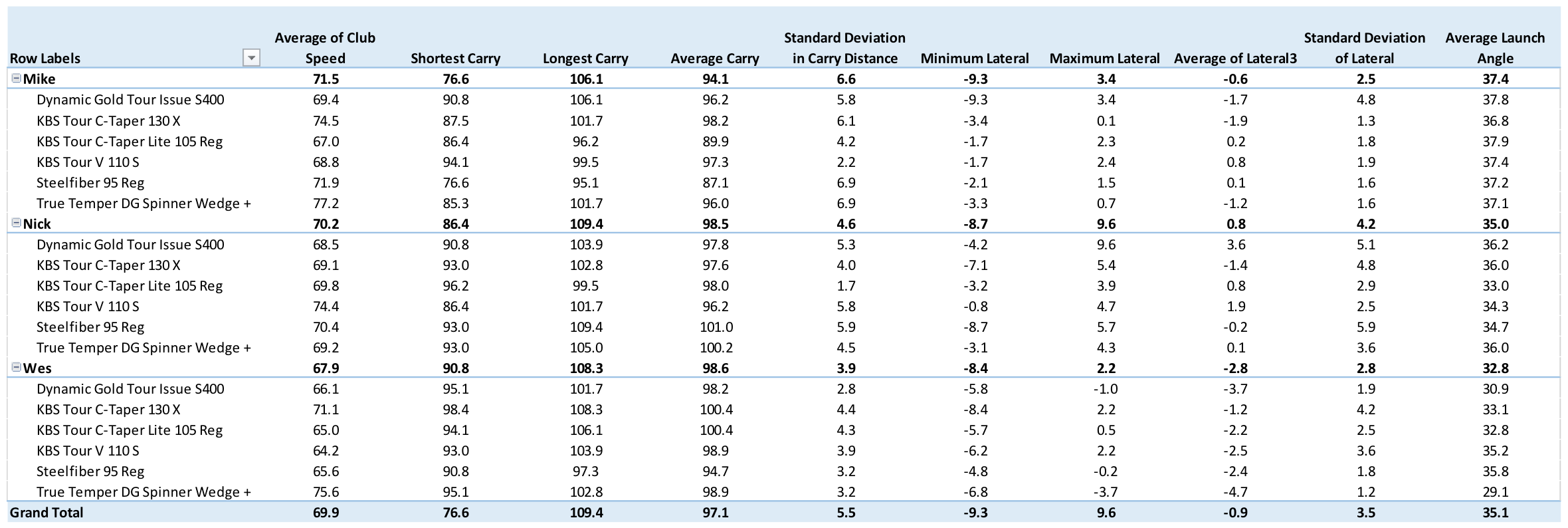
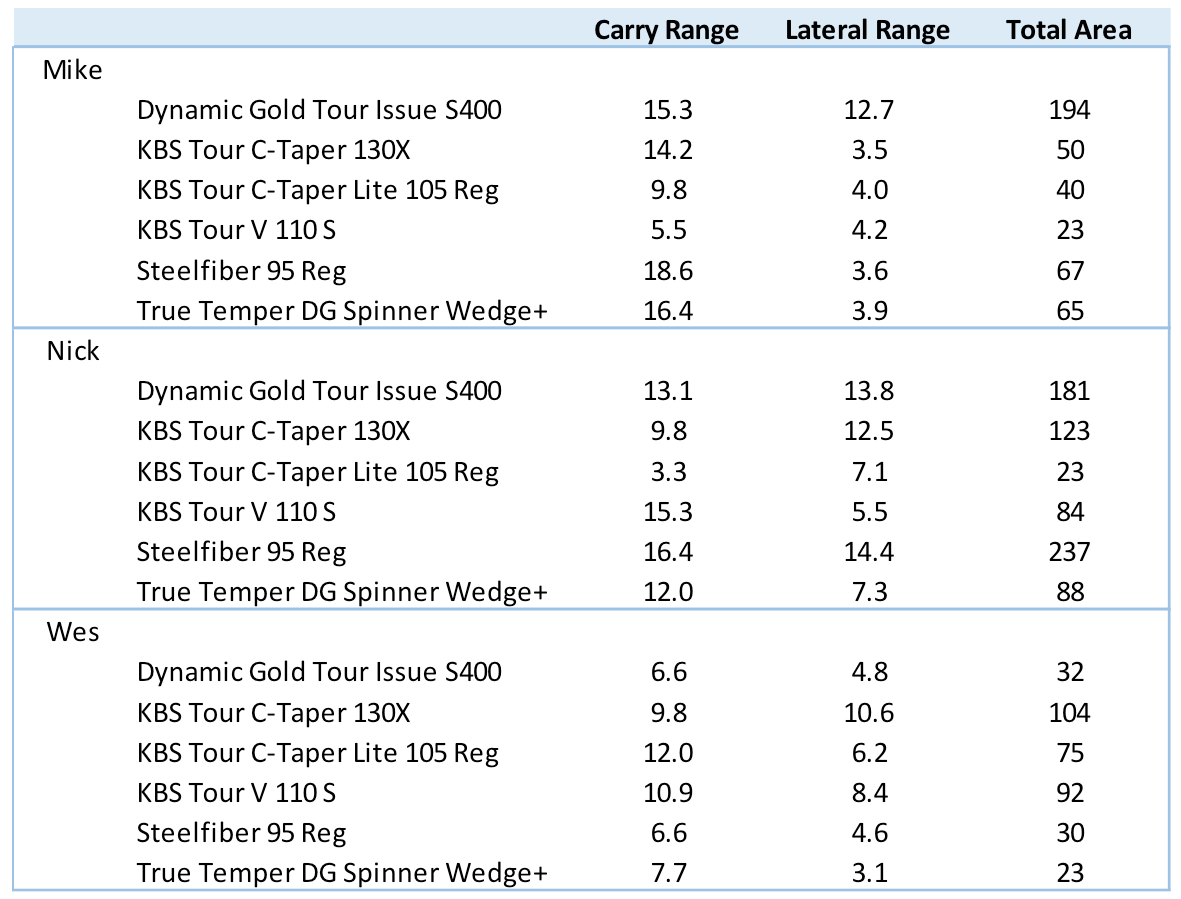
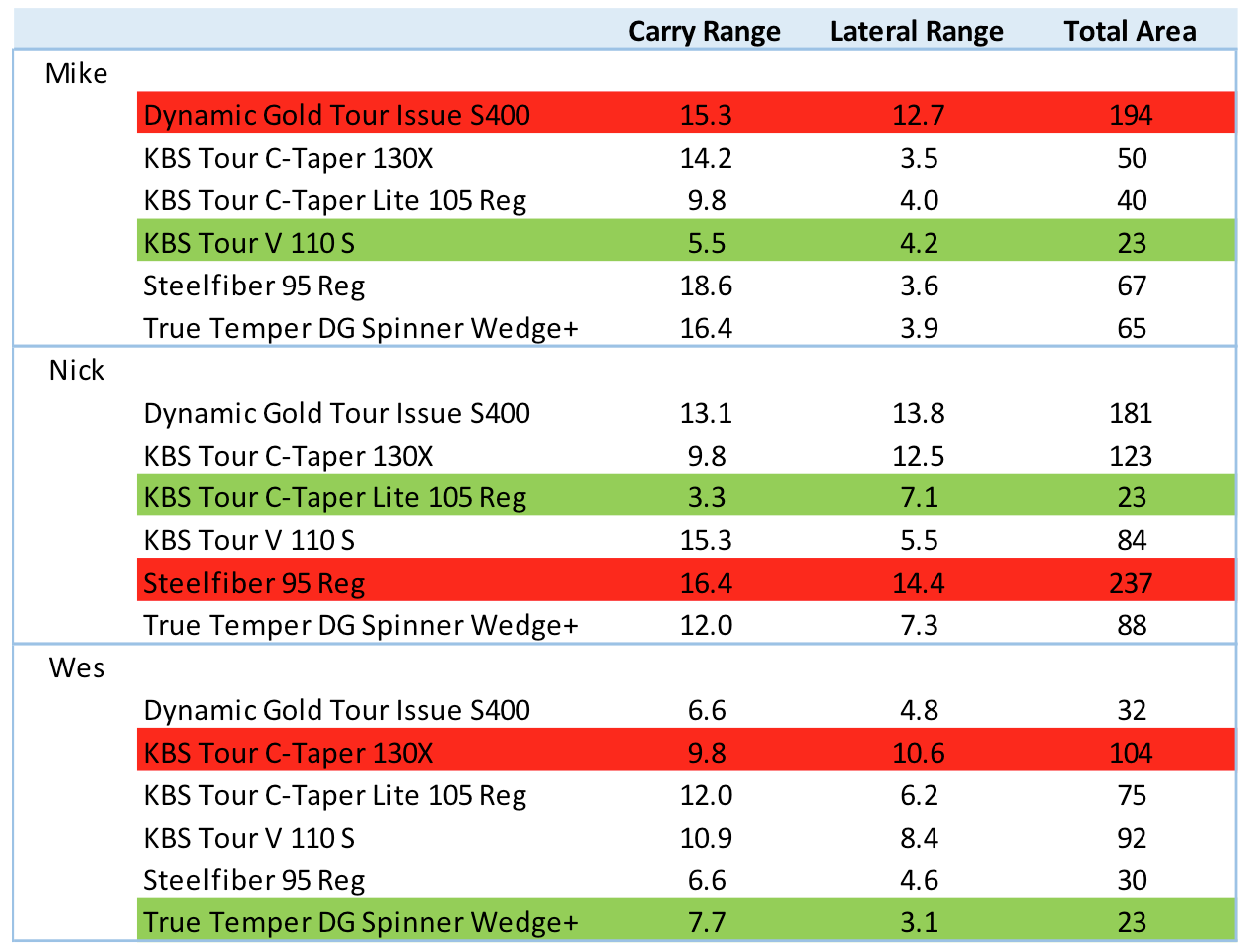






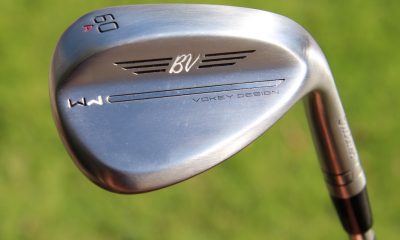

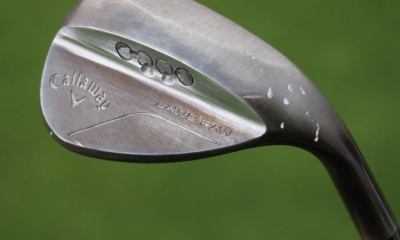





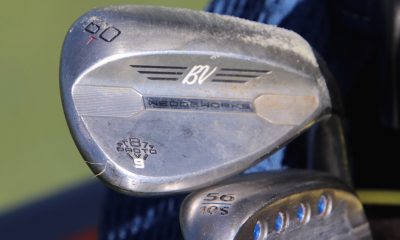











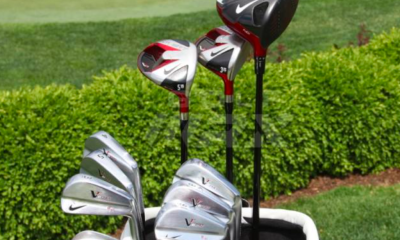





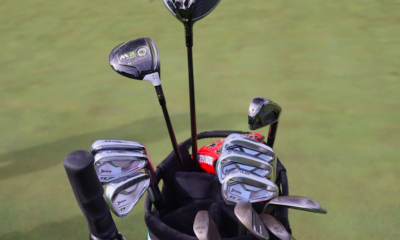

Steve Lack
Aug 28, 2016 at 11:25 am
Softer tips must be why some golfers tip trim their wedge shafts to 8 iron specs?
Ezra
Aug 21, 2016 at 4:35 pm
Absolute BS from a fitter trying to sell his services.
Steve S
Aug 31, 2016 at 1:53 pm
Agreed. Most of the articles I see on fitting are BS. Especially on drivers. Anyone schooled in physics and dynamics laughs at most of the articles. The reality is you want a shaft and grip that is as light and stiff as possible because any weight that is not in the club head does nothing to contribute to the force and momentum of the swing. By doing that then it’s a simple determination on loft of the club face and speed to determine maximum distance for you. This assumes that you have a reasonably decent swing arc and impact position. If not, you should work on that before worrying about “getting fit”.
John
May 27, 2020 at 3:46 pm
The dumbest comment ive ever read on any golf related subject, ever..
Clearly, You are an utterly clueless mental midget
Steve S
Aug 31, 2016 at 2:45 pm
Agreed. Most fitting advice is BS. All these guys try to make this complicated. Without a decent repeatable swing arc all “fitting” does is TRY to compensate for your mistakes which never works in the long run….
tlmck
Aug 19, 2016 at 3:06 pm
Same shafts as my irons and low bounce since the 1980’s has always worked well for me.
Benny
Aug 19, 2016 at 6:53 am
Great article even though I wasn’t able to understand all the data. I feel I am a better wedge player than most and know through trial and error what works well. S400 shafts my buddy had which he added weights too, were way to delayed so my shots went right while whippy wedge shafts or too light pull and hook. But how does the “bounce” play into this data? For instance I have always hit higher bounce heads much longer than low bounce. Regardless of the shaft. Should this be a factor when getting wedges fit and wouldn’t the bounce also cause different dispersion and accuracey?
baudi
Aug 18, 2016 at 9:25 am
Nice test and great article.
To me it simply proves that a good player should find his right wedge shaft.
Although I wouldn’t go as far stating lighter is better. (A softer shaft than in irons is definitely better. Tom Wishon did a great test on this one)
Point here is that a wedge being a utility club is used on partial shots most of the time. That implies a slower rhythm. A slightly heavier but softer shaft will create a lively feel in the swing.
Christian
Aug 17, 2016 at 10:39 pm
I have tried lighter shafts in wedges and initially they work well, especially during testing. After a while I start to get more misshits, a jerky/handsy action and even skulled shots. Back to S400s now, the most stable option for me. I game 130+ gram X in irons
Scott
Aug 24, 2016 at 9:34 am
I had the exact same results after moving to lighter shafts. Worked great until it didn’t. I get more feel with the heavier shaft.
Chris Wycoff
Aug 17, 2016 at 10:33 pm
Thanks for all the great comments and feedback – happy to answer any questions anyone might have!
jason c geraci
Aug 25, 2016 at 9:07 am
Why didn’t you test shafts that are specifically designed for wedges?
Chris Wycoff
Aug 17, 2016 at 10:30 pm
It’s not a specific wedge shaft, but we used in testing due to it’s flex profile. It it fits you, it’s a great shaft option.
Brian T
Aug 17, 2016 at 10:12 pm
Why not include the s200 as it is comes in pretty much every wedge out there? At least a baseline of sorts, or give us an idea of where it stacks up against the others.
Chris Wycoff
Aug 17, 2016 at 10:27 pm
Hi Brian –
That’s a good point, we used the S400 as it’s very close to the S200, only 3 grams heavier.
Matt
Aug 17, 2016 at 8:01 pm
I’m all messed up X100 in irons KBS Tour X in wedges.
Chris Wycoff
Aug 17, 2016 at 10:30 pm
Whatever works for you!
NS Pro
Aug 17, 2016 at 6:04 pm
Why were no Modus3 wedge shafts included in this fitting?
Chris Wycoff
Aug 17, 2016 at 10:07 pm
There was no reason it was intentionally excluded, we just had to pick a reasonable number of shafts with varying weights, flexes and profiles to show the variations. Love the Modus shafts, they very well may be the best shafts for you.
jf
Aug 17, 2016 at 5:53 pm
“Any findings will only be amplified for higher-handicap golfers due to increased swing variability, and any shaft-to-shaft variations might have been hidden by this inconsistency.”
So shaft fitting for wedges is of little benefit to most hackers?
Chris Wycoff
Aug 17, 2016 at 10:09 pm
Hi JF – thanks for reading, it actually means that wedge fittings are even more important for “most hackers’. Better players are better equipped to deal with a shaft that isn’t fit for their swing. Hackers need all the help they can get!
Larry
Aug 17, 2016 at 2:39 pm
I’m using reg flex KBS Tour 90 shafts in my irons. So the recommendation for my wedges is to soft step the same shafts to get lighter & more flexible. Correct?
Chris Wycoff
Aug 17, 2016 at 10:11 pm
Larry – the real recommendation is to find a fitter that allows you to test multiple options and find the best possible shaft. If that’s not possible, it’s very likely soft stepping your same shafts would produce better results than a stock wedge shaft.
DB
Aug 17, 2016 at 2:12 pm
What do you mean by this? You don’t like a lot of wedge or putter designs? Or they have the least tech?
“For most, wedges are in an unfortunate race with the putter to win the unceremonious award of the clubs that help golfers the least.”
explainer
Aug 17, 2016 at 3:17 pm
He means essentially “amateur/high-cap golfers just pick their wedges and putter willy nilly at a detriment to their score”
Chris Wycoff
Aug 17, 2016 at 10:47 pm
DB – unfortunately explainer is correct. Few golfers are fit for wedges and putters even though they are used for over half the shots in a round. The wedges and putter in most bags are working against the golfer, instead of for them.
T-Bone
Aug 17, 2016 at 1:56 pm
Chris, How does a shaft create more spin than another?
Chris Wycoff
Aug 17, 2016 at 10:12 pm
T-Bone –
Thanks for reading. Different shafts have different flex profiles that produce varying flight characteristics. For many, a soft tip section will produce a higher flight with higher spin.
T-Bone
Aug 18, 2016 at 12:16 am
OK, thanks. How many more RPM’s of spin could an average swing speed player expect when switching to a soft tip shaft?
Chris Wycoff
Aug 18, 2016 at 9:29 am
It’s really impossible to say. There are so many variables in the swing and how they interact with the shaft is what matters. It’s best to really find somewhere to try some options and find out for yourself.
Tyler Brown
Aug 17, 2016 at 1:10 pm
Why were wedge specific shafts like KBS 610 and Hi Rev not tested?
Chris Wycoff
Aug 17, 2016 at 10:32 pm
Hi Tyler –
If I were trying to make general recommendations on specific shafts, I definitely would have included them. The intent of this article was to simply illustrate how much variance there is between different shafts for different golfers. In an actual fitting, I do typically include those for testing.
GMR
Aug 17, 2016 at 1:09 pm
How often do these guys hit 100yd 56* wedge shots on the course? Personally I find that to be a relatively challenging scoring shot because the length of swing necessary and amount of spin generated (can get ball caught up in wind, spon back 15 feet on green, etc) and would normally opt to hit a 1/2 52* shot instead, which comes in lower and still stops dead. Would be curious to see these numbers again for testers hitting controlled half shots (e.g. 56* to 85-90) as I suspect the variation in swings and shaft performance may not be so substantial…
Chris Wycoff
Aug 17, 2016 at 10:17 pm
GMR –
Great question, these guys tend to hit that shot pretty frequently. We’ve found in fittings that the trend of using a lighter, softer shaft is actually amplified on half swing. The hypothesis is that these lighter, softer shafts still flex on easier swings and provide feel and feedback that is consistent with a full iron shot. For most, using an overly stiff shaft for these touch shots reduces feedback and consistency. Of course, there is not rule that applies for every golfer so it’s best to test for yourself if possible.
Uncle Buck
Aug 17, 2016 at 12:54 pm
Bravo!
Craig
Aug 17, 2016 at 12:18 pm
Great article, been looking for a good wedge shaft and this hits the bullseye. Thanks Chris.
Chris Wycoff
Aug 17, 2016 at 10:17 pm
Thank you!
Ryan
Aug 17, 2016 at 11:49 am
Is there a reason you tested the shafts with a full to 3/4 wedge shot?
Does the consistency with a specific shaft in your results continue with chips and pitches?
desmond
Aug 17, 2016 at 11:28 am
Typically, wedge shafts are slightly heavier but more flexible than your iron shafts… hmmm.
desmond
Aug 17, 2016 at 11:34 am
But maybe it says that faster speed players with heavy irons shafts do not need heavy wedge shafts. And that makes sense in terms of one is not typically going full bore with a high lofted wedge.
I can’t see a guy with 80g graphite shafts go to 75g graphite or steel in wedges. I see that guy (me) going from 85g graphite in R flex to 105g steel in R for greater precision, still keeping the shaft flex the same as irons. A golfer with stiff flex may want to go down slightly in flex.
Chris Wycoff
Aug 17, 2016 at 10:18 pm
Desmond – you may really want to try a lighter shaft in your wedges if possible. You might be pleasantly surprised.
desmond
Aug 18, 2016 at 4:21 am
Chris – I was fit for a KBS Hi Rev by an Edel fitter at 115g. My new Edel is fit with 110g Nippon Pro Modus Wedge 105. I think you’ll be surprised that if you get too light, you lose control, not to mention the balance of the club is affected. I am a strong wedge player. The lighter graphite iron shafts are for distance and less shock to body.
Chris Wycoff
Aug 18, 2016 at 9:25 am
Getting fit is the best answer – that’s why I was pretty careful to indicate these were trends, not solutions. Every player is different and what works for some definitely will not work for others. I’m glad you found the shafts that work the best for you!
AllBOdoesisgolf
Aug 17, 2016 at 11:06 am
great article but I wouldn’t say their swings are consistent… maybe, after seeing the results, that’s why you used the qualifier of “relatively”. When you have 6mph difference from top to bottom is speed there are going to be different results.
then again, we are not robots… it just surprised me that guys with low single digit handicaps can have such a large discrepancy of swing speeds.
Leon
Aug 17, 2016 at 11:05 am
Or another thumb of rule: use one less flex shafts (the same model) of your irons for your wedges. For example, if you have DG S300 for the irons, consider to put the DG S200 or soft step the S300 once or twice for the wedges. In this way, the clubs will have the same feel and swing characteristics, and there will no transition gap between the irons and wedges.
Lee
Aug 17, 2016 at 2:27 pm
Agreed, I know one of Europe’s top fitter and this is exactly what he and many others are doing.
Chris Wycoff
Aug 17, 2016 at 10:44 pm
While it’s best to try multiple shafts and get fully fit, if that’s not possible, your rule of thumb is likely much better than a stock “Wedge” shaft.
kyle
Aug 17, 2016 at 10:23 am
Agreed, terrific article. Thanks
J
Aug 17, 2016 at 10:05 am
Seriously great article, well done!
DaveMac
Aug 17, 2016 at 2:44 pm
A big thumbs up from me, nice to see a data driven equipment performance article for a change. Really interesting conclusions.